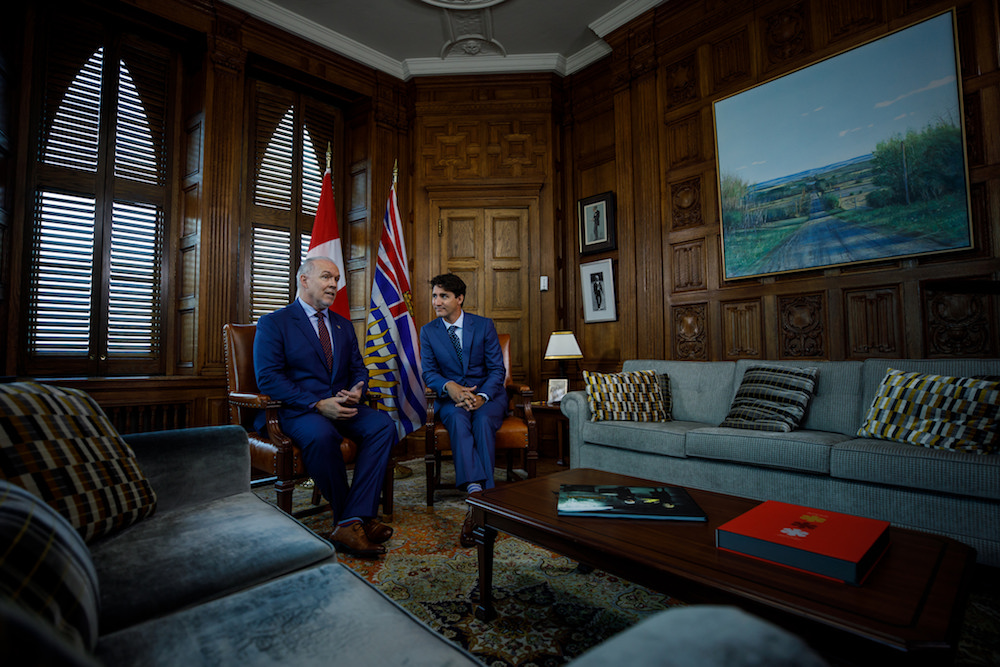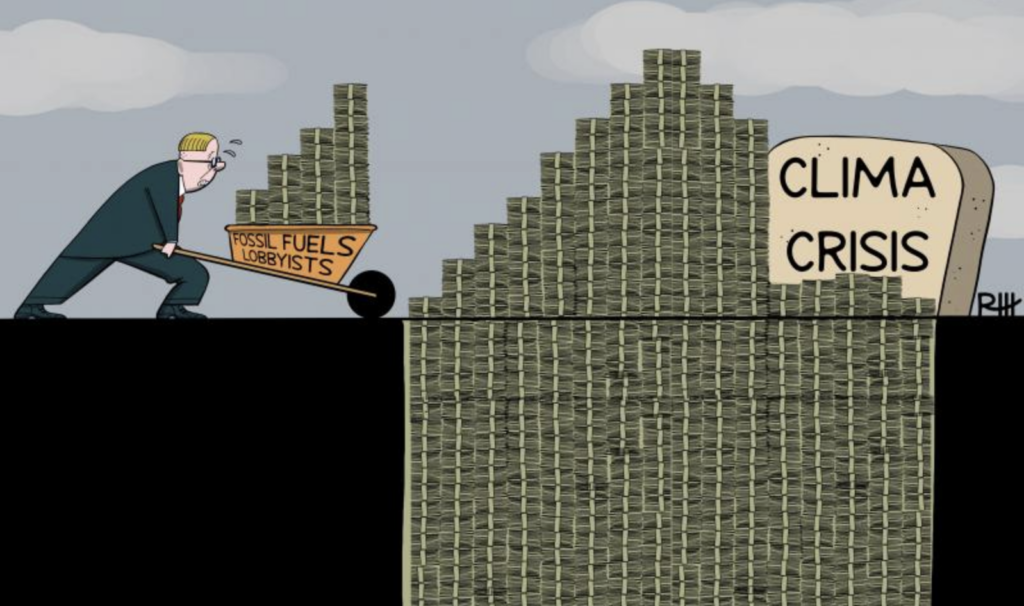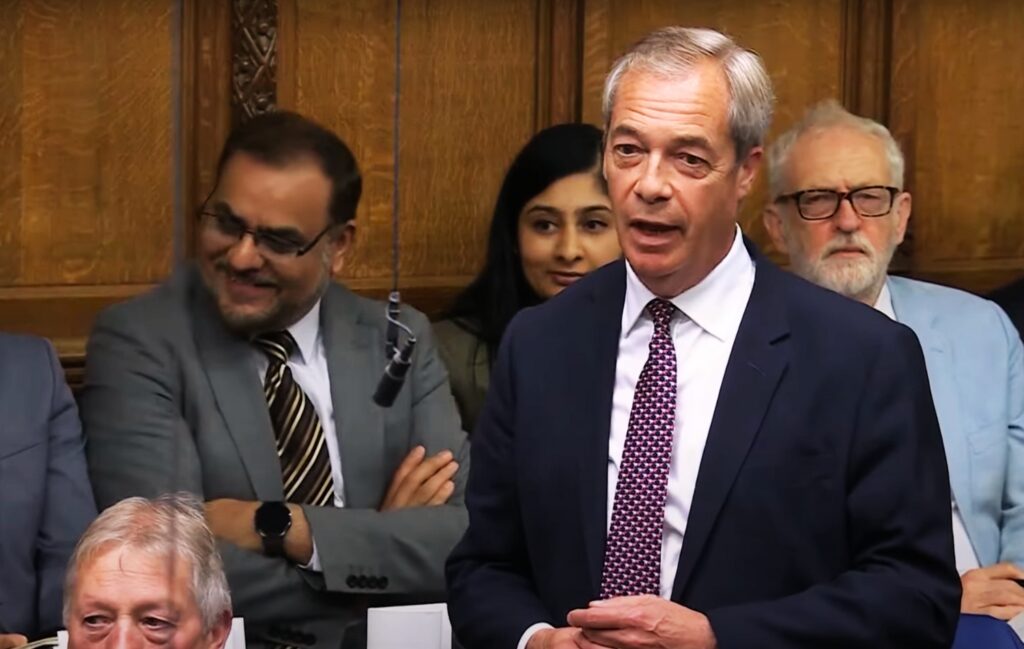By Sarah Cox, The Narwhal. Originally posted on The Narwhal.
Fracked gas export project will be B.C.’s largest carbon polluter
There was a telling comment from Shell Global’s Maarten Wetselaar — representing five multinational investors in a CAN$40 billion project to ship B.C. liquefied natural gas to Asia — amidst the hoopla that accompanied Tuesday’s LNG announcement.
“The governments of Canada and British Columbia have helped to ensure that the right fiscal framework is in place to make sure that the pie is divided in a just and fair way,” Wetselaar told a Vancouver news conference hosted by LNG Canada, which will oversee construction of a 670-kilometer pipeline carrying natural gas from northeastern B.C. to a processing plant in Kitimat, where it will be liquefied for transport in ocean tankers.
“And that fiscal framework leads to why we believe LNG Canada is in the right place.”
The “right” fiscal framework amounts to a bouquet of government subsidies for B.C.’s largest carbon polluter, including tax reprieves, tax exemptions and cheaper electricity rates for some of the largest and most profitable multinationals in the world — the LNG Canada quintet of Royal Dutch Shell, Mitsubishi Corp., Malaysian-owned Petronas, PetroChina Co. and Korean Gas Corp.
At a technical briefing for media, a B.C. senior government official pegged the province’s total financial incentives for the project at CAN$5.35 billion.
The first of the incentives, a break on provincial sales tax during project construction, was approved Tuesday by the B.C. Cabinet.
“LNG under the existing framework was not going to be competitive in British Columbia,” said the official, noting that the LNG investors said they could not do business in B.C. without a new “cost-competitive” framework. (Media are not permitted to name government officials giving technical briefings.)
The official also noted that the Trump administration’s tariffs on steel — which have added considerably to the cost to building a new LNG facility in the Gulf Coast — and China’s retaliatory 10 percent tariff on U.S. LNG now “makes our gas more competitive.”
Patrick DeRochie, climate change and energy program manager for Environmental Defence, pointed out that just two weeks ago in Halifax the federal government re-committed to ending fossil fuel subsidies by 2025, a promise that includes subsidies from provincial governments.
“It’s hard to see how the federal and provincial governments can continue to fund fossil fuel projects to the tune of billions of dollars, and meet this 2025 commitment,” DeRochie told The Narwhal.
“It’s completely contradictory.”
Canada provides more government support for oil and gas companies than any other G7 nation and is among the least transparent about fossil fuel subsidies, according to a June report from a coalition of NGOs.
DeRochie defined a subsidy as “any tax provision, or benefit from the government that has the effect of giving one sector an advantage over another in the economy.”
To entice the LNG Canada investors, the B.C. government has offered a break on the carbon tax, the elimination of the LNG income tax it previously supported and cheaper electricity rates than those set by the previous Liberal administration.
A PST exemption means that LNG Canada will not have to pay provincial sales tax during the project’s five-year construction period. A natural gas tax credit gives companies an additional three percent corporate income tax cut, according to B.C. Green Party leader Andrew Weaver.
The corporate income tax act exemption will require legislation but the government said it will not be introduced during the current session because that particular tax break will only kick in when LNG production begins around 2023.
The B.C. Liberals hailed the LNG announcement as a “great day” for British Columbia, while Weaver called it a “tax giveaway.”
“Adding such a massive new source of GHGs means that the rest of our economy will have to make even more sacrifices to meet our climate targets,” Weaver said in a statement.
The LNG project will emit 3.45 megatonnes of greenhouse gas emissions annually, according to the provincial government, which promised the cleanest LNG in the world even though claims of “clean LNG” have been thoroughly debunked.
The project’s emissions will represent more than one-quarter of B.C.’s legislated targets for carbon pollution in 2050, set at about 13 megatonnes a year.
A beaming B.C. Premier John Horgan said at the LNG Canada press conference that carbon emissions from the LNG project will fit within a “robust and aggressive climate action plan” to be unveiled this fall, while noting that “it will be significantly challenging for all of us.”
“Today LNG Canada has sent a signal to the world that British Columbia and Canada are open for business,” the premier said.
The government said B.C. will still be able to meet its obligations under the 2015 Paris climate agreement.
But the NDP’s long-awaited climate action plan will only take the province to 75 percent of its emissions targets, according to senior officials at the technical briefing.
Karen Tam Wu, B.C. managing director for the Pembina Institute, said B.C. is headed in the wrong direction with the LNG Canada project unless the province has a clean growth strategy that puts B.C. on track to meet its climate targets.
“The task of reducing B.C.’s carbon pollution must not be underestimated,” Wu said in a statement. “With B.C.’s climate action having stalled in recent years, we have to be ambitious to make up for lost time.”
In addition to the climate considerations, scientific research has not fully caught up on the many impacts of unconventional gas development, Wu said.
“Recent research demonstrates evidence of risks posed by hydraulic fracturing to our water resources and public health. In the absence of further investigation, we should be cautious about putting our communities at risk.”
Fracking wells in the Farmington area of northeastern B.C. Credit: Garth Lenz, The Narwhal
Exporting liquefied natural gas involves fracking for gas in B.C.’s northeast, a process that uses a proprietary mix of chemicals and massive amounts of water. The industry’s growing need for fresh water has resulted in the construction of at least 90 unlicensed dams in northeast B.C.
About 60 percent of the gas for the LNG facility will come from new fracking, according to the government.
Northeast B.C. — a boreal region rich in biodiversity that is home to endangered woodland caribou and many other species vulnerable to extinction — is already ground zero for resource development in B.C. Existing linear disturbances in the region, including roads and seismic lines, are so extensive they could wrap around the planet four and half times, according to Global Forest Watch.
The fracked gas will be shipped through TransCanada’s new Coastal GasLink pipeline to Kitimat, where it will be cooled in massive compressors to minus 162 degrees Celsius, the point at which gas turns into liquid and becomes easier to transport in ocean tankers.
LNG Canada will burn its own natural gas for the energy-intensive compression process, resulting in substantial greenhouse gas pollution.
The government justified the project on the grounds that it will create 10,000 jobs and generate CAN$23 billion for provincial coffers over the next 40 years.
The project is supported by elected councils of 25 First Nations communities along the pipeline route and the Haisla First Nation, on whose traditional territory the LNG facility will be built. Several Wet’suwet’en Hereditary Chiefs oppose the project, pointing to tactics they say have created division and strife.
The hereditary system has been tested in court several times and has helped form the laws most aboriginal rights and title cases have been based upon. “The Wet’suwet’en Hereditary Chiefs do not endorse nor support pipeline projects that threaten the health and well-being of our lands and our people,” said Debbie Pierre, executive director of the Office of the Wet’suwet’en.
DeRochie said research shows that six or seven times more jobs are created for every dollar invested in a renewable energy project instead of in fossil fuels.
“If our objective is wider jobs and indirect economic benefits there are better ways to spend public money than attracting resources for a sunset industry that we cannot continue to expand if we are going to meet our climate targets.”
Weaver pointed out that a significant portion of the investment will be spent on a plant manufactured overseas, with steel produced outside Canada.
“B.C. taxpayers will subsidize its power by paying rates twice as high and taking on the enormous public debt required to build Site C.”
The hugely over-budget Site C dam, under construction on B.C.’s Peace River, will generate 1,100 megawatts of power that will cost at least CAN$120 megawatts per hour to produce, according to independent energy experts. Any difference between the cost of producing the power and its selling price will eventually have to be shouldered by British Columbians.
Of the 19 export LNG projects proposed under the previous Liberal administration, only one other project, the relatively small Woodfibre LNG championed by NDP insider and lobbyist Moe Sihota, has received a final investment decision.
Main image: Left, B.C. Premier John Horgan and, right, Canadian Prime Minister Justin Trudeau. Photo: Adam Scotti via Province of British Columbia, CC BY–NC–ND 2.0
Subscribe to our newsletter
Stay up to date with DeSmog news and alerts








